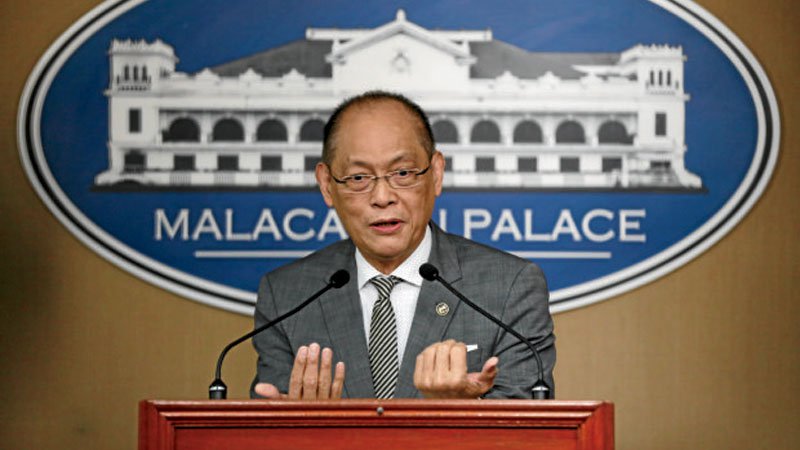
Budget Secretary Benjamin E. Diokno (File photo from Philippine Daily Inquirer)
Economic managers on Friday kept most of the Duterte administration’s macroeconomic assumptions but lowered the proposed national budget for 2018 due to a watered down tax reform package that reduced revenue gains.
After the Cabinet-level Development Budget Coordination Committee (DBCC) late Friday, Budget Secretary Benjamin E. Diokno said they would propose a P3.767-trillion budget for next year, lower than the earlier estimate of P3.84 trillion.
Diokno said the lower budget proposal stems from the adjustments made by the House of Representatives in the first tax reform package it approved last week.
In this light, the government brought down its 2017 and 2018 revenue and spending targets.
For 2017, the revenue target was lowered to P2.427 trillion from the previous program of P2.482 trillion.
The government expenditures program, meanwhile, was cut to P2.909 trillion this year from P2.96 trillion previously.
Next year, revenues are programmed to reach P2.841 trillion, lower than the previous P2.99-trillion program.
Expenditures next year will rise to P3.364 trillion, although lower than the previous program of P3.517 trillion.
The budget deficit cap was kept at 3 percent of gross domestic product, or P482 billion this year and P523.6 billion next year.
As for the other macroeconomic targets, Diokno said the Duterte administration’s GDP growth targets of 6.5-7.5 percent this year and 7-8 percent from 2018 to 2022 were maintained, alongside inflation and interest rates assumption.
In light of improving global trade, Diokno said the DBCC raised the growth target for 2017 to 5 percent from 2 percent previously; in 2018, 7 percent from 5 percent previously; and in 2019, 9 percent from 7 percent.
From 2020 to 2022, exports were expected to expand by 9 percent yearly.
As for imports, growth was pegged at 10 percent annually during the period 2017-2019, before rising to 11 percent yearly in 2020-2022. /atm